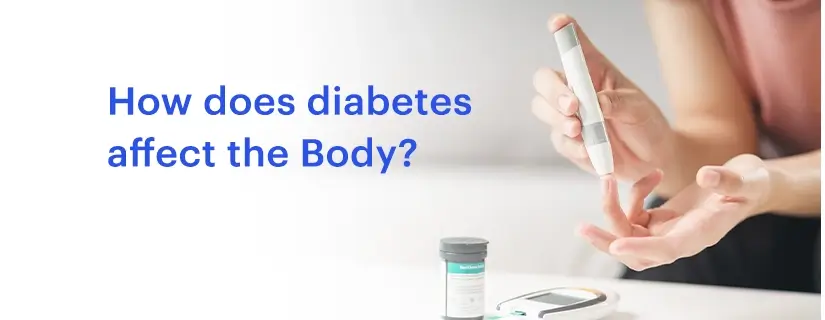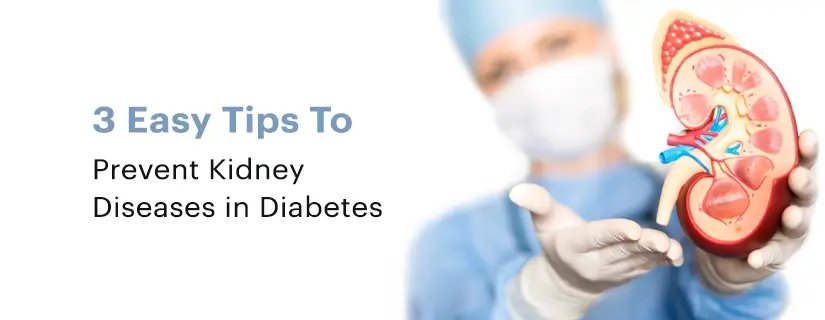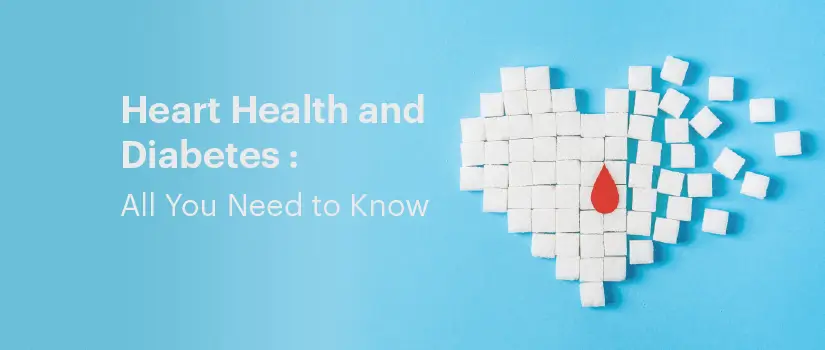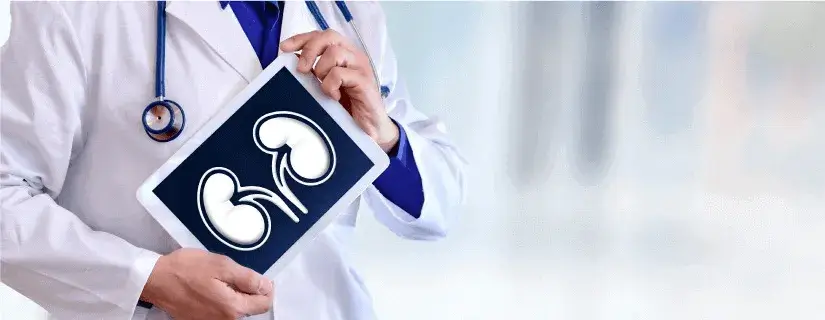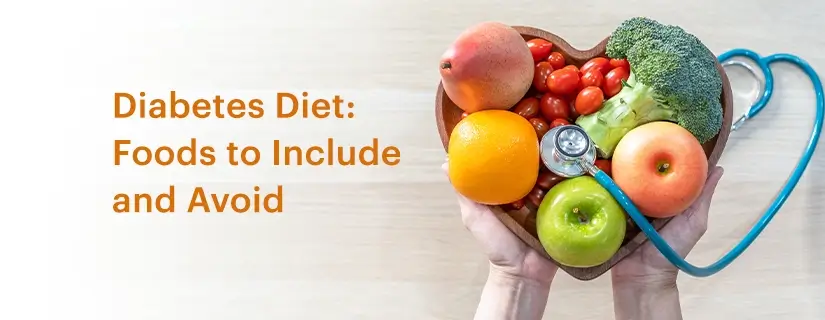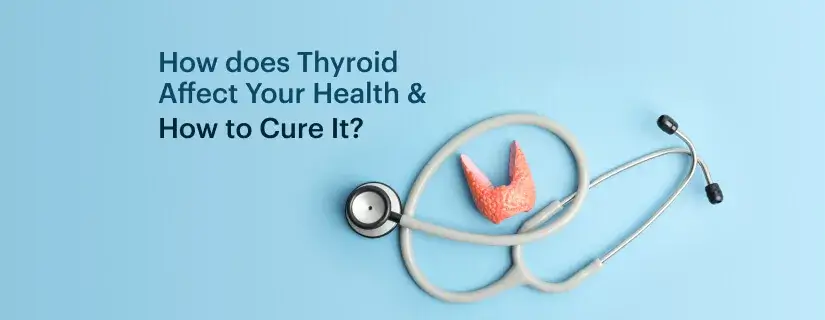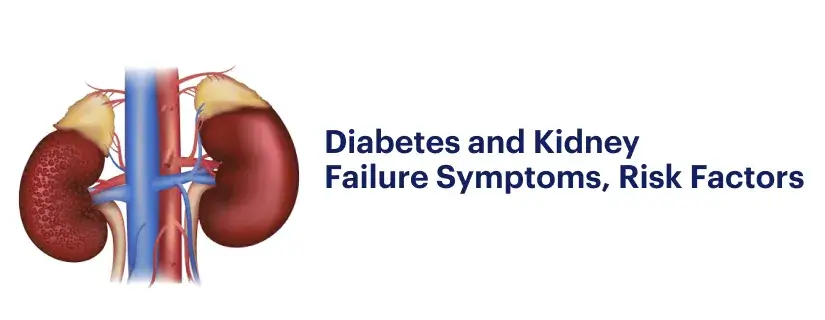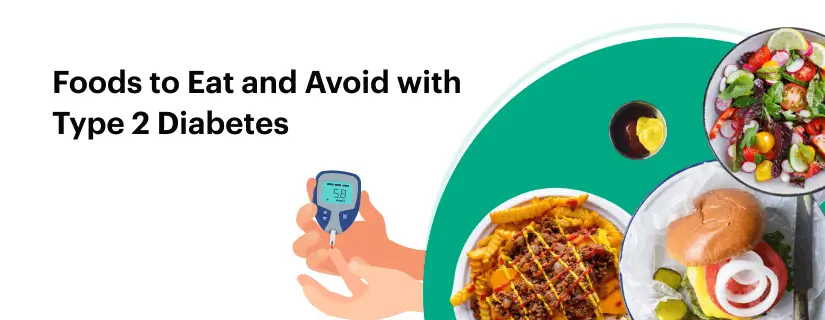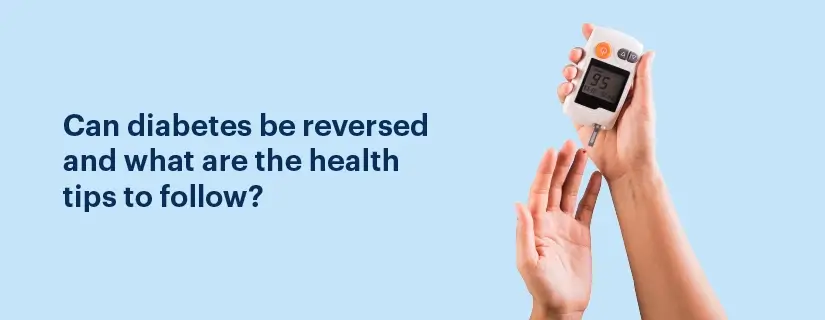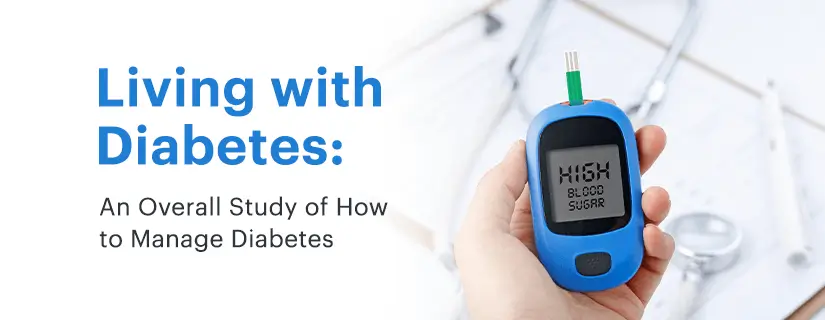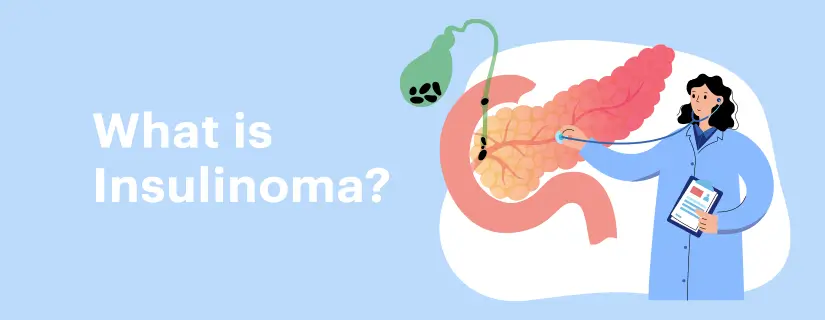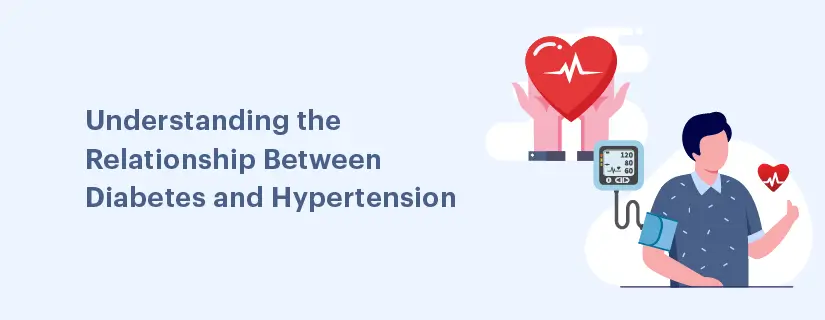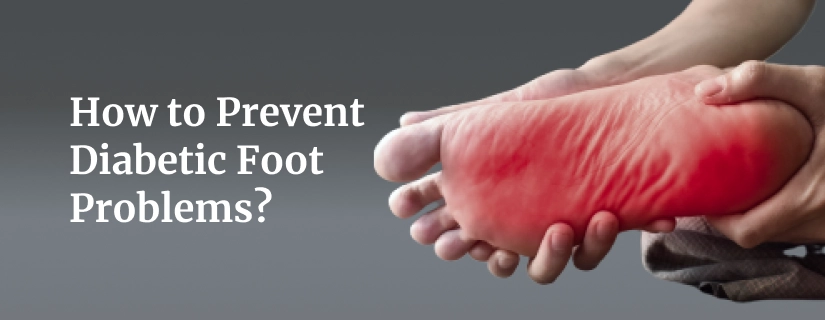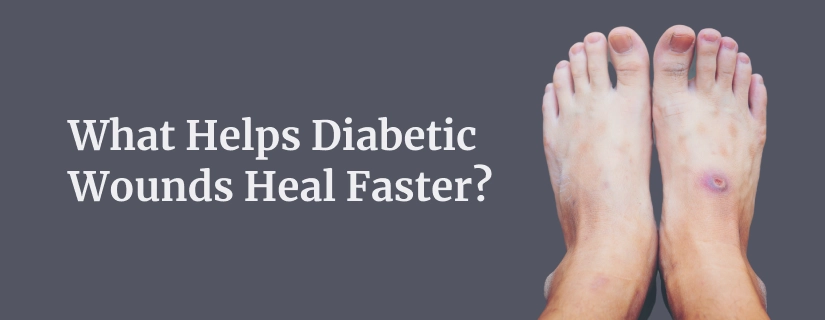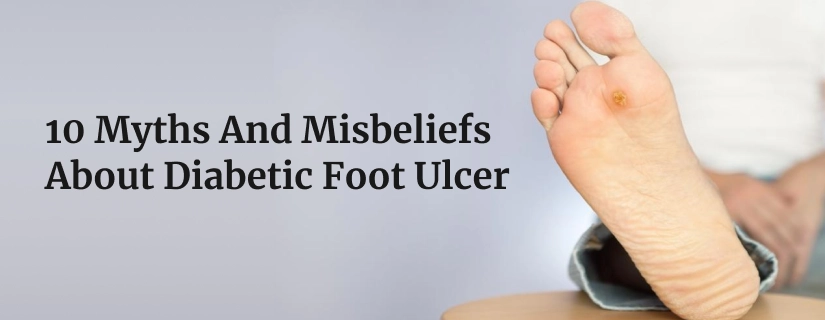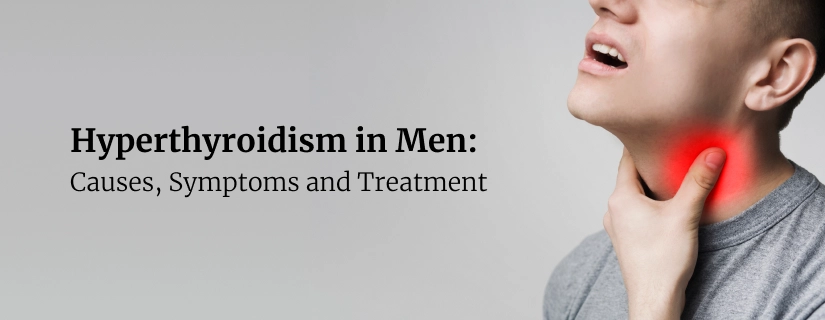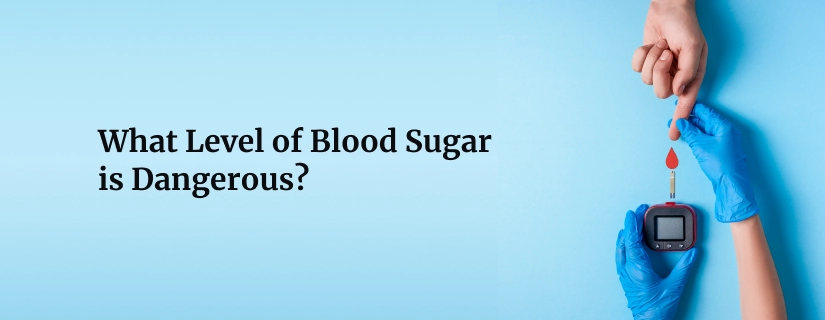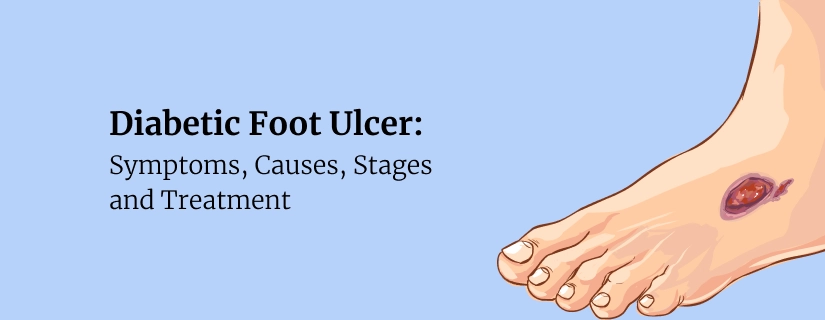-
Doctors
-
Specialities & Treatments
Centre of Excellence
Specialties
Treatments and Procedures
Hospitals & Directions HyderabadCARE Hospitals, Banjara Hills CARE Outpatient Centre, Banjara Hills CARE Hospitals, HITEC City CARE Hospitals, Nampally Gurunanak CARE Hospitals, Musheerabad CARE Hospitals Outpatient Centre, HITEC City CARE Hospitals, Malakpet
HyderabadCARE Hospitals, Banjara Hills CARE Outpatient Centre, Banjara Hills CARE Hospitals, HITEC City CARE Hospitals, Nampally Gurunanak CARE Hospitals, Musheerabad CARE Hospitals Outpatient Centre, HITEC City CARE Hospitals, Malakpet Raipur
Raipur
 Bhubaneswar
Bhubaneswar Visakhapatnam
Visakhapatnam
 Nagpur
Nagpur
 Indore
Indore
 Chh. Sambhajinagar
Chh. SambhajinagarClinics & Medical Centers
Book an AppointmentContact Us
Online Lab Reports
Book an Appointment
Consult Super-Specialist Doctors at CARE Hospitals
Difference between Type 1 and Type 2 Diabetes
Updated on 15 November 2023
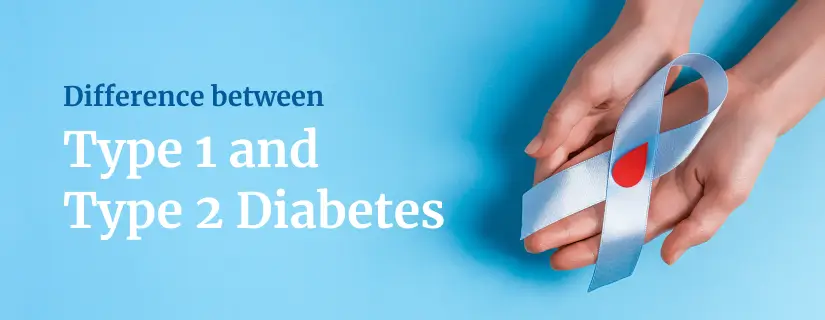
Diabetes is a chronic condition that changes the way the body absorbs sugar and consumes energy. The food that is consumed contains energy in the form of glucose. This glucose is absorbed by the blood and taken to different parts of the body. When the amount of sugar in the blood increases, the body produces a peptide hormone known as ‘Insulin’. Insulin is the key that allows the sugar in the blood to be used as energy by the cells of the body.
When someone has diabetes, it is generally due to one of the two possible reasons – either the body is not producing enough insulin or the insulin that is being produced is not being used completely to convert glucose to energy. The first type is known as Type 1 Diabetes, whereas the second one is referred to as Type 2 Diabetes.
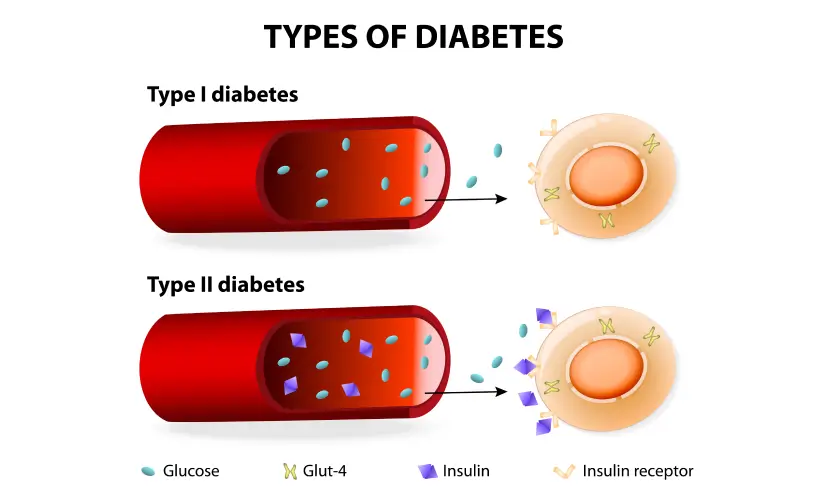
Difference between Type 1 and Type 2 Diabetes
- On a basic level, the difference between the two types of diabetes is that Type 1 Diabetes is caused due to an autoimmune genetic disorder that stops the body from producing any insulin, whereas Type 2 Diabetes is caused due to lifestyle and eating habits, which change the way the body reacts to Insulin.
- The result for both types of diabetes is similar – the body is unable to convert blood sugar to energy for the cells, which can cause higher or lower than normal blood sugar, weight loss, weight gain, fatigue, extreme weakness, etc.
- Type 1 Diabetes is often diagnosed early in life during childhood since this is a genetic condition and therefore, there is no way to prevent this type of Diabetes.
- On the other hand, Type 2 Diabetes usually happens with age. However, due to a sedentary lifestyle and unhealthy eating habits, it can also develop in younger adults. This type of diabetes can be hereditary but is preventable by taking the right precautions right from a young age.
Causes of Type 1 and Type 2 Diabetes
Type 1 Diabetes and Type 2 Diabetes, though they cause similar issues within the human body, the causes of both types are significantly different.
-
Type 1 Diabetes: Type 1 Diabetes occurs due to an autoimmune genetic disorder, which means that the body’s immune system is unable to recognize whether the cells are useful or not. It is meant to fight infection and any attacks by foreign pathogens; however, in the case of Type 1 Diabetes, the cells of the pancreas are being attacked, which prevents it from completing its function, i.e. producing insulin when food is eaten. Since Insulin is not produced, there is no way for the body to convert the glucose in the food into usable energy for the cells of the body.
- Type 2 Diabetes: The exact cause of why some people develop Type 2 Diabetes is unknown, however, it has been found that people who are obese or overweight, who have a family history of diabetes, have hormonal imbalances are more likely to have Type 2 diabetes. Genetic mutations can also be a cause for the pancreas to not produce enough insulin or for the body to develop insulin resistance. In recent times, a lack of physical activity has also been seen as a contributing factor to Type 2 Diabetes.
Symptoms of Type 1 and Type 2 Diabetes
Type 1 and Type 2 Diabetes may have some common symptoms, such as increased thirst, and frequent urination, but since the underlying causes for both of these types of diabetes are different, the signs that are visible and identifiable are also different.
Some of the common symptoms of Type 1 Diabetes are –
- Frequent mood changes and irritability
- Feeling thirsty often
- Frequent urination
- In the case of young children, frequent urges to urinate can also cause bed-wetting during the night
- Increased appetite
- Rapid loss of weight without intention
- Tiredness and weakness throughout the day
- Blurred vision and headaches
Some of the common symptoms of Type 2 Diabetes are –
- Feeling thirsty often
- Frequent urination
- Blurred vision and headaches
- Tiredness and weakness throughout the day
- Tingling sensation in arms and legs
- Frequent infections
- Rapid weight loss
- Slow healing of wound
What are the similar effects of type 1 and type 2 diabetes
Damage to any stage of the process that transports glucose from your bloodstream to your cells leads to diabetes.
Both type 1 and type 2 diabetes present similar signs:
- Excessive thirst
- Increased hunger
- Fatigue
- Blurred vision
- Irritability
- More frequent urination
- Headaches
Individuals with type 2 diabetes might also experience:
- Regular or persistent infections
- Slow wound healing
- Tingling or numbness in hands or feet
- Gum issues
- Skin itching
- Erectile dysfunction
How diabetes can affect the heart, eyes, kidneys, and nerves
- Heart: Diabetes can lead to blocked blood vessels in the heart (coronary artery disease) and damage to heart muscles, which can cause chest pain, heart attacks, or heart failure.
- Eyes: Diabetes can harm the blood vessels in the eyes, leading to vision problems like blurry vision or even blindness. It also raises the risk of developing cataracts (cloudy lenses) and glaucoma (increased eye pressure).
- Kidneys: Diabetes can damage the kidneys' blood vessels, affecting their ability to filter waste from the blood. This can lead to kidney failure over time and increases the risk of infections in the urinary tract.
- Nerves: Diabetes can damage nerves, especially in the feet and legs, causing tingling, numbness, or pain. This nerve damage (neuropathy) can also affect digestion, heart rate, blood pressure, and sexual function.
Risk Factors of Type 1 and Type 2 Diabetes
In terms of risk factors, there is a difference between Type 1 and Type 2 Diabetes.
- Type 1 Diabetes: Since Type 1 Diabetes is a genetic disorder, there are no external risk factors. Family history of Type 1 Diabetes, along with age, plays a major role in increasing the risk. People who have parents, siblings, or any other close family member with this condition are prone to be diabetic. Along with this, Type 1 Diabetes is mostly diagnosed among children.
- Type 2 Diabetes: Type 2 Diabetes has multiple risk factors, most of which are dependent on the people and their lifestyle. It is a common condition that affects millions of people all around the world. People who have slightly higher blood sugar levels, are obese, physically inactive, over the age of 40, have hormonal disorders, such as Polycystic Ovary Syndrome, and have immediate family or close family members who also have Type 2 diabetes are at risk of developing Type 2 diabetes themselves.
Complications Type 1 and Type 2 Diabetes
Both type 1 and type 2 diabetes carry the potential for severe long-term complications if not properly managed. These complications cause a range of health issues, including:
- Cardiovascular Disease: People with diabetes have an increased risk of cardiovascular problems, such as heart attack and stroke. High blood sugar levels over time can damage blood vessels and contribute to the buildup of fatty deposits, raising the likelihood of heart disease.
- Kidney Disease and Kidney Failure (Nephropathy): Diabetes can harm the kidneys by affecting their filtering ability. Over time, this can lead to kidney disease and eventually kidney failure, requiring dialysis or transplantation.
- Eye Problems and Vision Loss (Retinopathy): Diabetes can cause damage to the blood vessels in the retina, leading to diabetic retinopathy. This condition can result in vision impairment and even blindness if left untreated.
- Nerve Damage (Neuropathy): Elevated blood sugar levels can damage nerves throughout the body, causing symptoms such as numbness, tingling, and pain, particularly in the extremities. This neuropathy can affect various organs and body systems.
- High Blood Pressure (Hypertension): Diabetes often coexists with high blood pressure, which further increases the risk of heart disease, stroke, and kidney problems.
- Delayed Wound Healing: Poorly managed diabetes can impair circulation and weaken the immune system, leading to slow wound healing. This increases the risk of infections and other complications.
Diagnosing Type 1 and Type 2 Diabetes
Diagnosis of both Type 1 and Type 2 diabetes is done using similar methods i.e. blood tests. The most common methods of testing for diabetes are –
- Fasting Blood Sugar Test – Blood is taken after a 10-12 hour fasting period to check for the level of blood sugar.
- Postprandial Glucose Test – This blood test is done after 2 hours of eating something.
- A1C Test – The A1C test, or the glycated haemoglobin test, is also a blood test that provides compounded data of the blood sugar level for the last 2-3 months.
Treatment of Type 1 and Type 2 Diabetes
Some common treatments are prescribed for both Type 1 and Type 2 diabetes such as healthy eating, no late-night eating, and moderate physical exercise 4-5 times a week.
Specific treatment for Type 1 diabetes includes the use of insulin pumps or frequent insulin injections since the body isn’t able to produce insulin for proper functioning. In some severe cases, doctors might also recommend a pancreas transplant (a very rare and complex procedure). Type 2 diabetes is more of a lifestyle disease, a change in the basic lifestyle people follow is the best treatment. Oral medicine may also be prescribed to keep blood sugar levels under control.
FAQs
1. Are type 1 and type 2 diabetes related?
Ans:Type 1 and type 2 diabetes are both related to how the body manages glucose (sugar) in the blood, but they have different causes and mechanisms.
2. Which one is hereditary, type 1 or type 2 diabetes?
Ans: Type 1 diabetes is not primarily hereditary. It is believed to result from a combination of genetic predisposition and environmental factors, such as viral infections, that trigger an autoimmune response leading to the destruction of insulin-producing cells in the pancreas.
Type 2 diabetes has a stronger hereditary component. Family history and genetics play a significant role in predisposing individuals to type 2 diabetes, along with lifestyle factors such as diet and exercise.
3. Can type 1 and type 2 diabetes be cured?
Ans: Type 1 diabetes cannot be cured, but it can be managed with insulin therapy. Type 2 diabetes can sometimes be managed or even reversed through lifestyle changes like diet and exercise.
4. Can you have type 1 and type 2 diabetes together?
Ans: It's extremely rare to have both type 1 and type 2 diabetes simultaneously. Type 1 diabetes typically occurs earlier in life and is not related to insulin resistance, while type 2 diabetes usually develops later and is associated with insulin resistance.
5. Which is worse, type 1 or type 2 diabetes?
Ans: Both type 1 and type 2 diabetes have serious health implications if not managed properly. The severity depends on individual factors and how well the condition is controlled. Type 1 diabetes often requires insulin therapy from diagnosis and carries a higher risk of acute complications, while type 2 diabetes can often be managed with lifestyle changes but carries a higher risk of long-term complications if not controlled. The impact varies from person to person.

ENQUIRY FORM
SELECT CATEGORIES
-
Neurosciences (16)
-
Neurology (37)
-
Neurosurgery (14)
-
Orthopaedics (48)
-
Oncology (33)
-
Obstetrics and gynecology (52)
-
Pulmonology (23)
-
Urology (20)
-
Nephrology (13)
-
Psychiatry (7)
-
Dietetics and Nutrition (111)
-
General Medicine (63)
-
Cardiac Sciences (32)
-
Vascular & Endovascular Surgery and Interventional Radiology (15)
-
Gastroenterology (46)
-
Endocrinology (23)
-
Plastic Surgery (10)
-
Critical Care Medicine (5)
-
COVID-19 (16)
-
Dermatology (16)
-
Emergency Care (1)
-
Ophthalmology (4)
-
Pediatrics (14)
-
Laparoscopic and Bariatric Surgery (8)
-
ENT (15)
-
Kidney Transplant (1)
-
Liver Transplantation and Hepatobiliary Surgery (5)
-
General Surgery (3)
-
Internal Medicine (5)
-
Medicine Information
12 Foods To Avoid in Thyroid (Hypothyroidism)
What are the Symptoms of Uncontrolled Diabetes?
YOU MAY ALSO LIKE
RECENT BLOGS
-
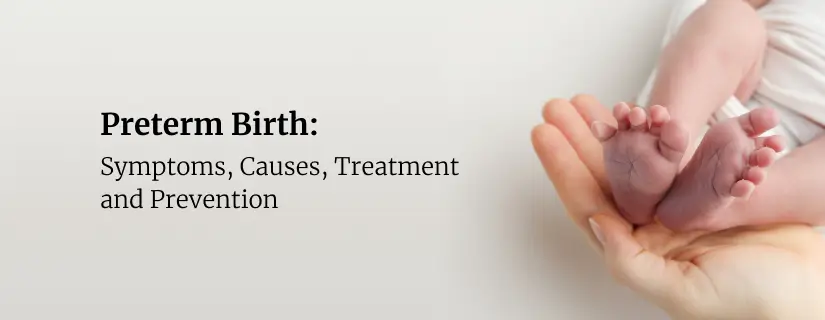
Preterm Birth (Premature Birth): Symptoms, Causes, Treatment and Prevention
13 May 2025
Read More
-
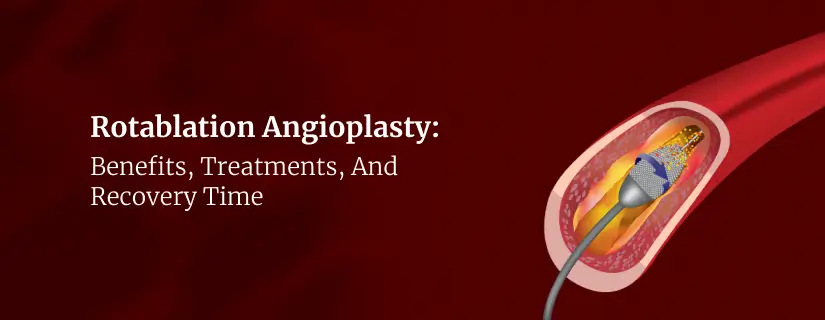
Rotablation Angioplasty: Benefits, Treatments, And Recovery Time
9 May 2025
Read More
-
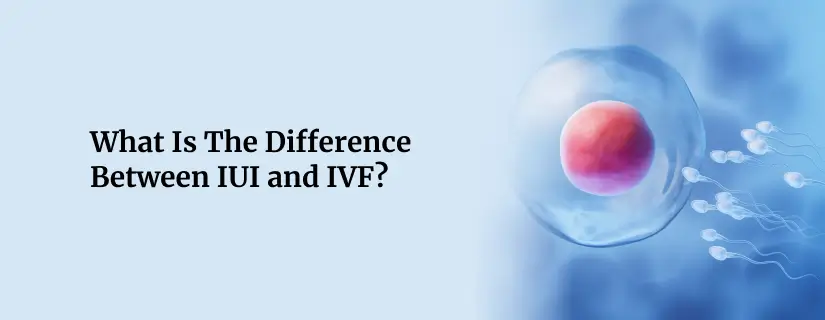
What Is The Difference Between IUI and IVF?
9 May 2025
Read More
-

Venous Malformations: Causes, Symptoms, and Treatment
30 April 2025
Read More
-
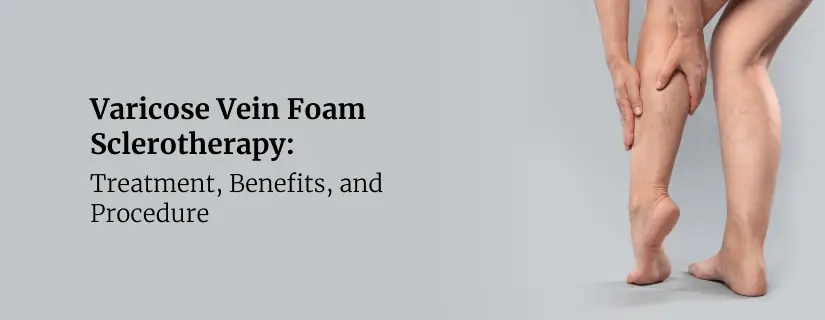
Varicose Vein Foam Sclerotherapy: Treatment, Benefits, and Procedure
30 April 2025
Read More
-
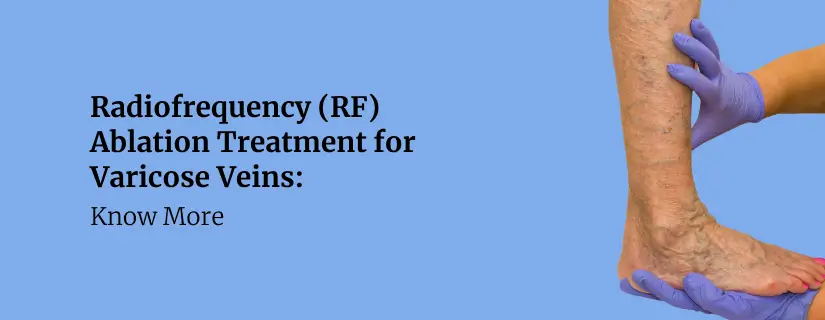
Radiofrequency (RF) Ablation Treatment for Varicose Veins: Know More
30 April 2025
Read More
-

Varicose Vein Sclerotherapy: Treatment, Benefits, and Procedure
30 April 2025
Read More
-
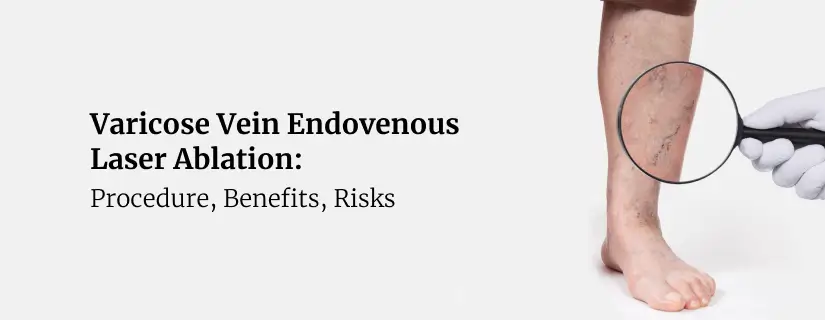
Varicose Vein Endovenous Laser Ablation: Procedure, Benefits, Risks
30 April 2025
Read More
Have a Question?
If you cannot find answers to your queries, please fill out the enquiry form or call the number below. We will contact you shortly.


